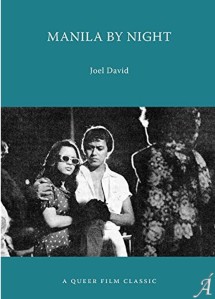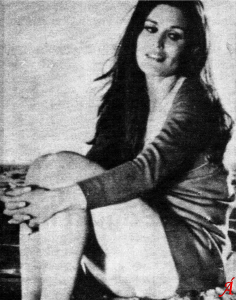I originally uploaded a PDF copy of the chapter comprising the transcription of the audiotape surreptitiously recorded by Dovie Beams during her intimate sessions with Ferdinand E. Marcos. Both parties are gone but I found out only recently that Beams had passed away over three years ago. I consider her a definite and indispensable historical figure in Philippine cinema, not only for having starred in the fake Marcos biopic, Jerry Hopper’s Maharlika a.k.a. Guerrilla Strike Force (Roadshow Films International, 1970), but also because of the intrepid and purplish way she stood up to the harassment of Imelda Marcos, who arguably claimed her own share from her husband afterward by staging the ludicrously extravagant editions of the Manila International Film Festival.
11011We have to note at the outset that Beams sued Hermie Rotea, author of Marcos’ Lovey Dovie (Los Angeles: Liberty Publishing, 1983) – a 180-degree turnaround apparently, considering the “very special wishes to a very special guy” message that she scribbled on the photo reprinted on the back cover of the book; her lawsuit alleged that Rotea pilfered some items that were relevant to her account of her high-profile romance. Hence the textual version of incontrovertible material that she went on record as authentically sourced (from and by her) would be the safest portion in a book that made no bones about waging its own political agendum, as manifested in its preliminary sections.
11011Beams lived to a ripe old age, dying at 85 in her birth city, Nashville. By the time that the Marcoses fell from power, she had apparently given up on her Hollywood acting prospects but was able to acquire some valuable property; in an interview with the Los Angeles Times, she clarified two important matters: first, that the money came from the man she just married and not from the recently deposed President; and second, more surprisingly, that she still loved Marcos even though she felt compelled to leave him when he admitted to her that he was declaring martial law, upon which she realized that he was having people killed.[1]
11011What happened to her to occasion her return to her place of birth? That part of her narrative still has to be told, along with the cause of her death in 2017. Nevertheless a conflict in her fiscal claim seems to override most observers’ appreciation of the consistency of her affection: if she really did love Ferdie in spite of the many reprehensible acts that he and his spouse did to her, then Rotea’s book would have come across as a betrayal – as it did. A far more potentially upsetting scandal is how, with one exception,[2] real (sex-positive) feminists from either side of the Pacific still have to recuperate her narrative, as if being a then-emerging Third World dictator’s paramour positioned her beyond redemption.

From the Law and Behold! blogspot c/o Jun Brioso.
11011Speculation that any funds she had during the mid-1980s might have come from a mortally ill Ferdinand, could have proceeded from the guilt-ridden drive in liberal Western media (formerly protective, if not supportive, of pro-US despots) to track down and help recover the Marcoses’ record-breaking ill-gotten wealth, a project that still has to be completed at present. Beams though would have been an example of a contemporary Mata Hari[3] who barely got away from the wrath of Imelda. The latter, in turn (and thanks to Beams), abandoned all her cultivated pretensions to altruism and timidity and made sure that her rival’s reputation was thrashed beyond repair.
11011What I remember from media coverage was how both pro-Marcos and opposition publications prospered from exploiting a debased image of Beams, and how she could barely land roles in Hollywood thereafter despite the wide publicity her affair generated.[4] The “X-Rated Sex Tapes” chapter, comprising pages 143-81 of Marcos’ Lovey Dovie, is posted here along with the rest of the book, for its intrinsic though admittedly titillating research value, in place of the understandably now-rare recording that she once made available to Philippine media. (It was eventually broadcast over the national university radio station during the singularly liberative nine days of the Diliman Commune, which is celebrating its fiftieth anniversary this month.) My way of commemorating a genuine survivor of one of the most excessive and dangerous conflations of film, carnality, and politics our time has ever had the opportunity to observe.
Notes
For an update to this article, circa May 2023, see “Mystique of the Past.”
[1] See Deborah Hastings, “Ex-Actress Owns $7.7 Million in LA County Property: Controversy Follows Former Lover of Marcos” in the March 10, 1986, issue of the LA Times for the interview. An Associated Press report the next year, “Jury Convicts Alleged Former Marcos Mistress of Fraud” (datelined November 12, 1987), describes how Beams accumulated $18 million in loan applications from 13 banks in order to pursue a “lavish lifestyle,” with her personal financial bubble bursting after her husband Sergio de Villagran filed for bankruptcy, presumably after the 1986 interview.
11011Part of Beams’s defense included the now-implausible claim that she was suffering from HIV/AIDS and consequently had problems exercising proper judgment because of the medications she had to use. A curious sidelight of the report was her campaign to prevent a homeless shelter from being set up in the vicinity of her residence – a move oddly reminiscent of the sociopathic caprices of her nemesis Imelda Marcos, with whom she also shared a rags-to-riches-via-showbiz background.
[2] In “Dovie Beams and Philippine Politics: A President’s Scandalous Affair and First Lady Power on the Eve of Martial Law,” Caroline S. Hau describes how “Like Ferdinand Marcos, Dovie Beams has become a kind of ghost, haunting the narratives of our recent past and eluding all attempts at exorcism and closure” (626) – published in Philippine Studies: Historical and Ethnographic Viewpoints, vol. 67, nos. 3-4 (2019): 595-634. For a fascinating first-person account of how Imelda Marcos acquired a copy of the Beams tapes after her personal agent (a priest, no less) failed to get one during Beams’s press conference, see “How Imelda Confirmed Ferdinand Marcos’ Affair with Dovie Beams” by George Sison (Philippine Daily Inquirer, March 5, 2017); Sison also lists some of Beams’s local fair-weather friends in a separate article.
11011I plan to acquaint myself with a prolific New York City-based “dreampop instrumental music project” (whose output started in 2008) that calls itself Dovie Beams Love Child. The name apparently was intended as a milder version of the cross-referential shock effect that punk bands used to appropriate, from the Dead Kennedys to the several acts that use a mass murderer’s surname.
[3] The eponymously titled 1931 Greta Garbo film version (dir. George Fitzmaurice, Metro-Goldwyn-Mayer) is what I had in mind. It’s necessarily fictionalized, but then most accounts of Margaretha Zelle MacLeod’s transgressions have been unreliable, inflected by World War I’s divisive geopolitical conflicts. The Garbo character remains memorable not only because of the actor’s beauty and performative skill, but also because of how her far-from-guiltless Mata Hari decides to endanger her own life for the sake of the soldier who remains unaware (literally blinded) to the end, of how faithfully she kept her vow to him. The closest to an actual Dovie Beams cinematic treatment is the masterly film à clef directed by Lino Brocka and scripted by Ricky Lee, titled Gumapang Ka sa Lusak [Dirty Affair] (Viva Films, 1990).
[4] The fact that the regime, presumably with the covert sanction of the US, could also deploy agents capable of “disappearing” renegades like Primitivo Mijares, who wrote extensively about Beams and other Marcos dalliances in the original edition of The Conjugal Dictatorship of Ferdinand and Imelda Marcos (San Francisco: Union Square Publications, 1976), might have factored in Beams’s predicaments. Although again, short of any definitive disclosure in any form from her, the most we can indulge in on the matter are speculative exercises. In fact as early as 1973, she announced that she was working on a manuscript titled Dovie Beams by Me; during her 1986 interviews, she mentioned that it was already 1,500 pages long (see Patrick J. Killen, “Memo to ‘Freddie’: Dovie Has Some Interesting Tapes,” United Press International, January 31, 1986). A book with that title still has to materialize, however.
Á!













 ORCID ID
ORCID ID 